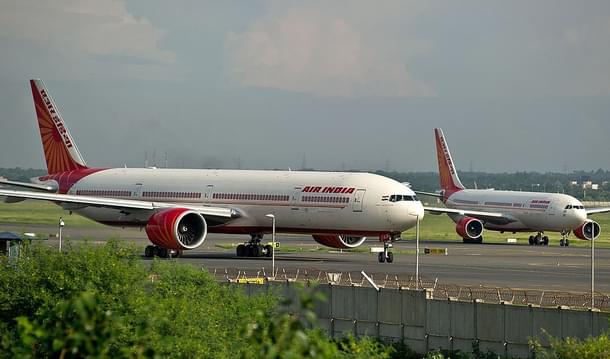Business
Air India Isn’t Worth Rescuing; It’ll Take The Industry’s Fortunes Down With It
R Jagannathan
Feb 09, 2017, 02:56 PM | Updated 02:56 PM IST
Save & read from anywhere!
Bookmark stories for easy access on any device or the Swarajya app.


The government is, once again, heading towards a cure that is worse than the disease afflicting Air India, which is Exhibit A in how not to run Indian aviation. Nirvana for Air India means euthanasia, not more life support at the cost of the taxpayer.
This Mint report says the government is trying to reschedule or rework its existing working capital loans of Rs 28,000 crore, owed to 19 banks. Next, it will induct professionals and, finally, list the company.
Air India does not need a stock exchange listing, for it is listing badly with an overall debt overload of Rs 50,000 crore. Its chairman, Ashwani Lohani, boasted in an interview to The Economic Times last month that his biggest threat is not Jet or IndiGo, but debt. “Remove that (debt) and we will beat everyone hollow.”
It is an empty boast for there is not a snowball’s chance in hell that its debt will ever be written off or that it can compete with the IndiGos of the world, thanks to its public sector baggage. The government’s indecisive attitude will not let it live profitably or die in relative peace. The fact is even in the best year for the industry, Air India could just about break even in operational terms. It is nowhere near viability, even without the debt.
In a market where even the Jets, SpiceJets and IndiGos are seeing profits cave in due to rising fuel prices, Air India is hardly the stock to bet on. In the third quarter of 2016-17 (ie, October-December 2016), IndiGo’s profits fell 25 per cent, while the Jet’s crashed by a third, says a report by Australia-based CAPA Centre for Aviation.
If the industry’s most competitive airlines are going to see profits drown in the face of overcapacity and falling yields, how is moribund state-owned Air India going to do any better, debt or no debt? According to CAPA, losses in 2016-17 for the Indian industry could hit $250-300 million and rise to $380-450 million in 2017-18, says another report in The Economic Times.
In this scenario of hyper-competition overcapacity, where the Indian aviation industry has ordered another 900 airplanes over the next decade, airport capacity is growing too slowly, and where fuel price hikes are more than likely, Air India is not going to shine.
There are only two options open to the government: one is to shut Air India down; and the other is to downsize it steadily, so that it can be a niche operator for VIP travels and on some unviable routes, where it can be directly subsidised by user ministries or states that want air connectivity. But even this does not make much sense, for if air connectivity is going to be subsidised, it would be wiser to give these subsidies to airlines with some chance of being viable rather than a no-hoper like Air India.
Put another way, the only real option is closure, with the Rs 30,000 crore bailout promised by the UPA being used to pay off employees and repaying debt.
Keeping Air India afloat is injurious to the health of Indian aviation for many reasons.
One, it bites the exchequer endlessly, and all for providing poor service to passengers.
Two, it prevents consolidation in the aviation sector, as even well-run airlines have to accept low yields due to overcapacity. The mere existence of large capacities on a state-subsidised Air India makes other airlines less viable. Air India will make large parts of the industry sick.
Three, it defocuses the aviation ministry by giving it a conflict of interest. If half the energies of the Civil Aviation Ministry are focused on how to rescue Air India, how is it going to make policies that benefit all?
Four, keeping Air India alive is bad for banks too. Remember Kingfisher Airlines? Banks are stuck with bad loans of over Rs 9,000 crore as they were forced to bail out Vijay Mallya repeatedly. But if forced lending to Mallya was wrong, how is it right for Air India?
Air India cannot be privatised even assuming the Narendra Modi government develops the spine to do it. It needs to be put to sleep to prevent it from causing further damage to itself, the taxpayer and the industry.
Jagannathan is former Editorial Director, Swarajya. He tweets at @TheJaggi.





